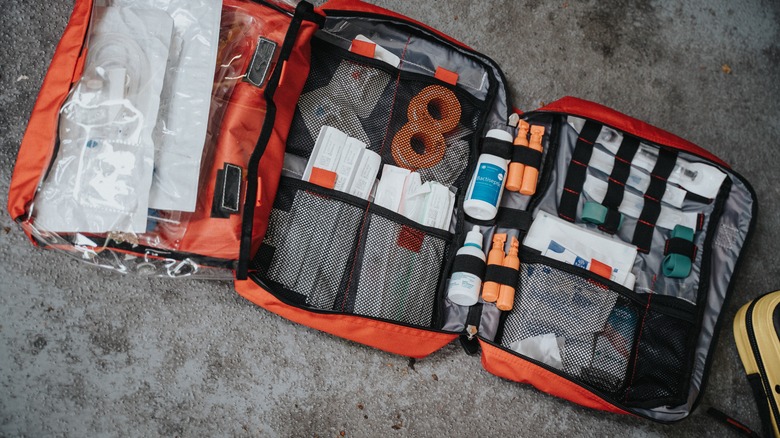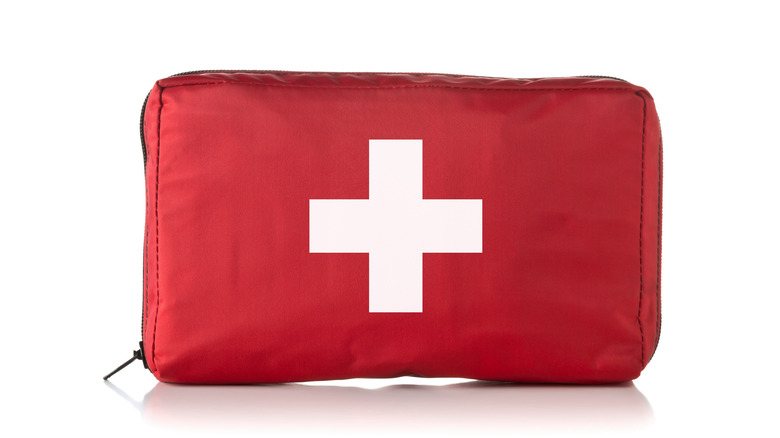5 Essentials You Need In Your Severe Weather Kit When Disaster Strikes
Disasters can happen at any time and often with little notice. Whether it is a tornado, flood, wildfire, or another natural disaster, there are some items you should always keep in your severe weather kit. Preparing a severe weather kit is a good project for the whole family. Smaller children will benefit from learning how to be prepared, and everyone will have some peace of mind that even in a disaster, you have a plan in place to keep everyone healthy. Ready suggests selecting a specific spot in your home to store your kit and to make sure everyone knows where it is.
Because some items expire, it is essential to update your severe weather kit frequently. Check it every couple of months and before tough weather seasons. This is also an excellent time to reexamine your family's needs. You may no longer need that stash of baby food, which means you will need to store more canned goods and water. Keeping your severe weather kit up-to-date keeps everyone safer in case of an emergency.
1. Food and water
Since a person can only live about three days without water, according to Medical News Today, this is a vital supply to keep in your severe weather kit. The National Weather Service recommends at least one gallon of water per person and at least three days' worth of food for everyone in your household. Don't forget the family pets; they need food and water, too.
If you are storing canned food, be sure to pack a manual can opener. A set of camping utensils will also come in handy. Ready suggests packing a variety of non-perishable foods, including protein like canned meat, beans, and peanut butter. Protein bars and dried fruit are also good options. Most importantly, pack food you know your family will eat. If you have a tornado shelter, this is a great place to store extra bottled water and canned foods. Just remember to check the expiration dates frequently.
2. Health and safety
With 66% of all American adults on prescription medication, via Georgetown University, it is important to make sure you add all necessary drugs to your severe weather kit. This is particularly important if you have older adults in your home and those with chronic conditions. The American Red Cross suggests keeping a seven-day supply of medicine and any other necessary health supplies in your kit.
Keeping a well-stocked first aid kit with your severe weather supplies is also important. Because it is possible to get minor injuries while escaping a disaster, it is essential to have the supplies you need to prevent wounds from getting infected. The Mayo Clinic suggests keeping a first aid kit stocked with bandages in different sizes, butterfly bandages, roller gauze, cotton balls, antibiotic ointment, antiseptic towelettes, a thermometer, and a first-aid manual. They also suggest keeping a few over-the-counter medications in your kit, including hydrocortisone cream and pain relievers.
3. Chargers and lights
You may be out of electricity for an extended period after a natural disaster, so investing in different chargers and lights for your severe weather kit is ideal. Keeping a charged power bank with your emergency supplies is an inexpensive way to charge phones when the power is out. Solar chargers are also an affordable and widely available option. According to The New York Times, you can even use a solar charger to recharge your power bank, allowing you to juice up your devices repeatedly as long as there is access to the sun.
For light at night, keep a couple of battery-powered or hand-cranked flashlights in your kit. Hand-cranked lights are often used for camping and can be found in the outdoor section of many department stores. LED lanterns, also used for camping, are a great way to light up a larger space and are energy-efficient. If you opt for battery-powered lights, be sure to pack extra batteries.
4. Weather radio
A weather radio can alert you before disaster strikes, allowing you and your family to get to safety. The National Weather Service recommends getting an NOAA Weather Radio, which broadcasts information directly from National Weather Service offices throughout the United States. According to EmergencyKits, there are two types of weather radios: portable and stationary. To stay ahead of emergency alerts, stationary radios are plugged into the wall but have a battery backup for when the weather goes out. For your severe weather kit, a portable radio is a better option. This type comes with a battery, hand-crank, and solar power options and is smaller than its stationary counterpart.
It may be easy to talk yourself out of getting a weather radio if you have a way to charge your mobile phone. Still, since there is no guarantee you will be able to get cell service or receive your local weather reports, NOAA Weather Radio provides the extra insurance you need to stay aware of the disaster situation.
5. Optional items
There are several optional items you can add to your severe weather kit based on your family's needs. Extra batteries for anything battery-powered in your supplies are always a good idea. If you can leave your home but your community is out of power, keeping extra cash in your kit could help you get additional supplies you need when ATMs are not working.
Entergy suggests adding a package of moist towelettes, a toothbrush and toothpaste, and a bag for garbage to your kit to keep your family and your space clean if there is no access to running water. If you have little ones – or even if you don't – small card games, toys, and a pen and paper can help pass the time while you wait for assistance. An extra set of reading glasses, sturdy shoes, and a jacket or sweater are all things to consider for comfort and convenience.





